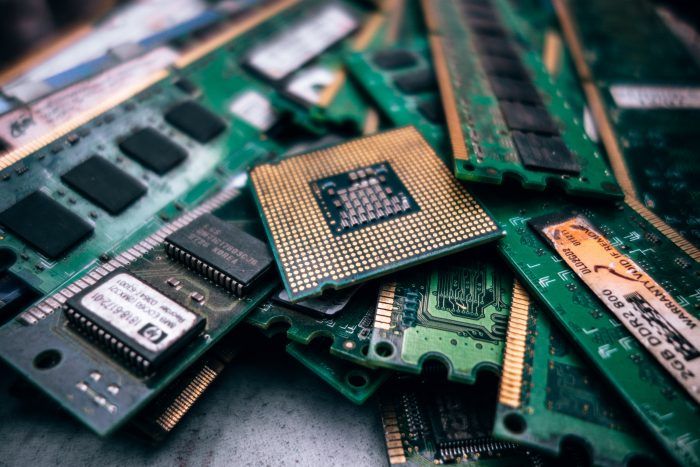In the first forward digital life, electronic devices are now an integral part of our daily lives and we are also witnessing regular innovation in technology, we are also facing the challenge of the disposal of electronic waste especially Printed Circuit Boards (PCBs). Having said that, the PCBs include valuable metals like gold, silver, copper, and palladium, making them a potential goldmine for sustainable recycling processes. Today we will be guiding you on the sustainable recycling methods employed for metal recovery from used PCBs.
Understanding the Challenge: Electronic Waste and PCBs
Electronic waste, or e-waste is one of the common problems which every country is facing across the globe and it is the fastest-growing waste as well. We can find PCBs in almost all electronic devices and the same are layered boards holding intricate connections of electronic components. Improper disposal of PCBs not only contributes to pollution but it also squanders precious resources. The traditional methods of incineration or landfilling not only harm the environment but also miss an opportunity to recover valuable metals embedded in these boards.
The Sustainable Recycling Solution: Responsible Metal Recovery
A. Environmentally Friendly Dismantling:
The first step towards sustainable PCB recycling is the safe dismantling of electronic devices. Environmentally friendly dismantling processes involve manual or automated techniques that minimize the release of hazardous substances. Workers equipped with proper safety gear carefully disassemble devices, ensuring the separation of PCBs from other components.
B. Mechanical Shredding:
Once separated, the PCBs undergo mechanical shredding, breaking them down into smaller pieces. Advanced shredding technologies utilize rotating blades and hammers to crush PCBs into granules. This mechanical process ensures the efficient separation of metals from non-metallic components, paving the way for further refinement.
C. Hydrometallurgical Leaching:
Hydrometallurgical leaching is a sustainable method widely employed in PCB recycling. This process involves dissolving metals from the shredded PCBs using environmentally friendly solvents. Acids like sulfuric acid and nitric acid are used to selectively leach metals, leaving behind non-metallic materials. The leached metals can be further purified and recovered through precipitation and other chemical processes.
D. Electrowinning and Electrorefining:
Electrowinning and electrorefining are electrochemical processes used to recover metals in their purest form. During electrowinning, metals are deposited onto electrodes, effectively separating them from the leach solution. Electrorefining refines these recovered metals, ensuring high purity levels suitable for various industrial applications.
E. Biotechnological Innovations:
As the world embraces sustainability, researchers are exploring biotechnological solutions for metal recovery from PCBs. Bioleaching, a process that utilizes microorganisms to extract metals from electronic waste, shows promising results. These microorganisms break down the metals, making them easier to extract and recycle. Biotechnological methods are eco-friendly and energy-efficient, aligning perfectly with the principles of sustainable recycling.
Benefits of Sustainable PCB Recycling:
A. Conservation of Resources:
Sustainable recycling methods conserve valuable resources by recovering metals from PCBs. This reduces the need for mining and the associated environmental impact, conserving precious minerals for future generations.
B. Reduction of Environmental Pollution:
Environmentally friendly recycling processes minimize pollution by preventing the release of hazardous substances into the air, water, and soil. By responsibly handling e-waste, we mitigate the negative environmental impact and create a cleaner, healthier planet.
C. Economic Opportunities:
Sustainable recycling not only benefits the environment but also creates economic opportunities. The recovered metals can be reintroduced into the manufacturing industry, reducing production costs and promoting a circular economy. Additionally, the recycling industry generates employment opportunities, fostering economic growth.
D. Promotion of Innovation:
Embracing sustainable recycling methods encourages research and development in the field of environmental science and technology. Innovations in PCB recycling techniques contribute to the global knowledge base, paving the way for more efficient and eco-friendly solutions in the future.
So be careful and be responsible towards the recycling of metals for a clean environment that is not only for ourselves but for the next generation as well.
- About the Author
- Latest Posts
A passionate advocate for all natural and sustainable ideas. With a background in sustainable economics science and a deep love for nature, Sojy has dedicated his career to promoting eco-friendly practices and encouraging others to live a more sustainable lifestyle. He is an avid hiker, gardener, and cook, and loves experimenting with natural ingredients in his recipes and lifestyle routines. Sojy believes that small changes can make a big impact and is constantly seeking out new ways to reduce his carbon footprint and inspire others to do the same




